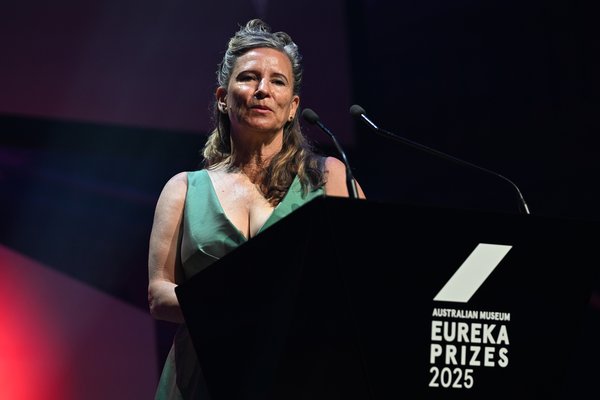Natural science conservator, Silvia Da Rocha, awarded ICON internship
You’re leaving the hallowed halls of the Australian Museum Conservation Lab. Where are you off to?
I applied for an internship with ICON - a cultural heritage conservation organisation in the UK. They host internships specialising in different areas of conservation land they were offering a natural science conservation internship with the National Museums of Scotland in Edinburgh, so I knew I had to apply.
Happily, I was successful! It means I will get to work on their natural science collections preserving specimens whilst learning about taxidermy and other modern preservation techniques from trade professionals. It is a huge win for me, and will contribute greatly to my professional development.

© Australian Museum
How did you come to be a conservator?
I came into contact with my first conservation lab while undertaking a bachelor of Art Theory at COFA in Sydney. I came into contact with my first conservation lab. But it was actually a chance conversation with a friend later that helped me realise I could actually do this, even with my non-science background. So off I went to Melbourne to do a masters in cultural material conservation, which is where I realised my lifetime love of biology and anatomy could be put to good use in the lab.
After university I did an internship at Museum Victoria and eventually ended up working there for a short time. I went on a short internship in Lisbon, then came back to Sydney to work at the Australian Museum. Working here has confirmed, almost on a daily basis, how much I love specialising in natural science conservation.
You’ve been at the Museum for some time now, what is the weirdest specimen or object you’ve worked on?
It is hard to pick one, especially considering the volume of weird and wonderful creatures that come through our lab. I will always have a soft spot for the Masked booby in the Lord Howe Island diorama, and the very large Aldabra tortoise that is parked near my colleague’s desk is my current favourite; but the weirdest? That has to be from the Deep Oceans exhibition, which was my first project here. The weirdest was definitely Psychrolutes marcidus A.K.A. Mr. Blobby, handling him was like holding two handful of heavy slippery jelly. In close second is the Horseshoe crab Limulus polyphemus which I’ve loved researching – not only does it look weird, it’s a living fossil, and has blue copper-based blood instead of red iron-based blood. There will be two specimens featured in the upcoming Armour exhibition and I feel happy knowing so many people will soon be exposed to the weirdness of that species.

© Australian Museum
Why are physical ‘things’ important to conserve? We now have data systems for biological and molecular information as well as videos, photography etc. What’s the use of keeping so many ‘things’ and looking after them?
There are endless biological and ecological imperatives to keeping a physical object in store – I suppose the simplest way to put it is that our collections are the truest representation we have of the physical world, and without them we would be sorely lacking in knowledge and understanding. A photograph or scan will never be a complete record without the physical study.There are endless reasons to continue preserving collections - DNA studies, comparative studies, biodiversity catalogues.
As a natural science conservator it is my job to ensure that important information is always preserved in the physical form of a specimen, whether for display or future study. Also, when it comes to displaying objects in museums, I think people underestimate the power of the object. Our society has a desire to be close to the 'thing', the original, the actual object – that is why we visit museums. When we present a specimen that has a particular story or history it becomes an even more powerful tool to intrigue and inspire. I feel that my work contributes to that in some small part which is deeply personally satisfying, and part of what keeps me going.
So long!
I’ve loved working at AM, I’ve been incredibly lucky to have found a great team of lab mates and I’ve been given the opportunity to develop my skills and strengthen my specialisation. I realise that not everyone can say they’ve cleaned a taxidermy porcupine and rehoused a mounted pelican specimen in the same day. I feel very lucky to work in such a unique and interesting place.












